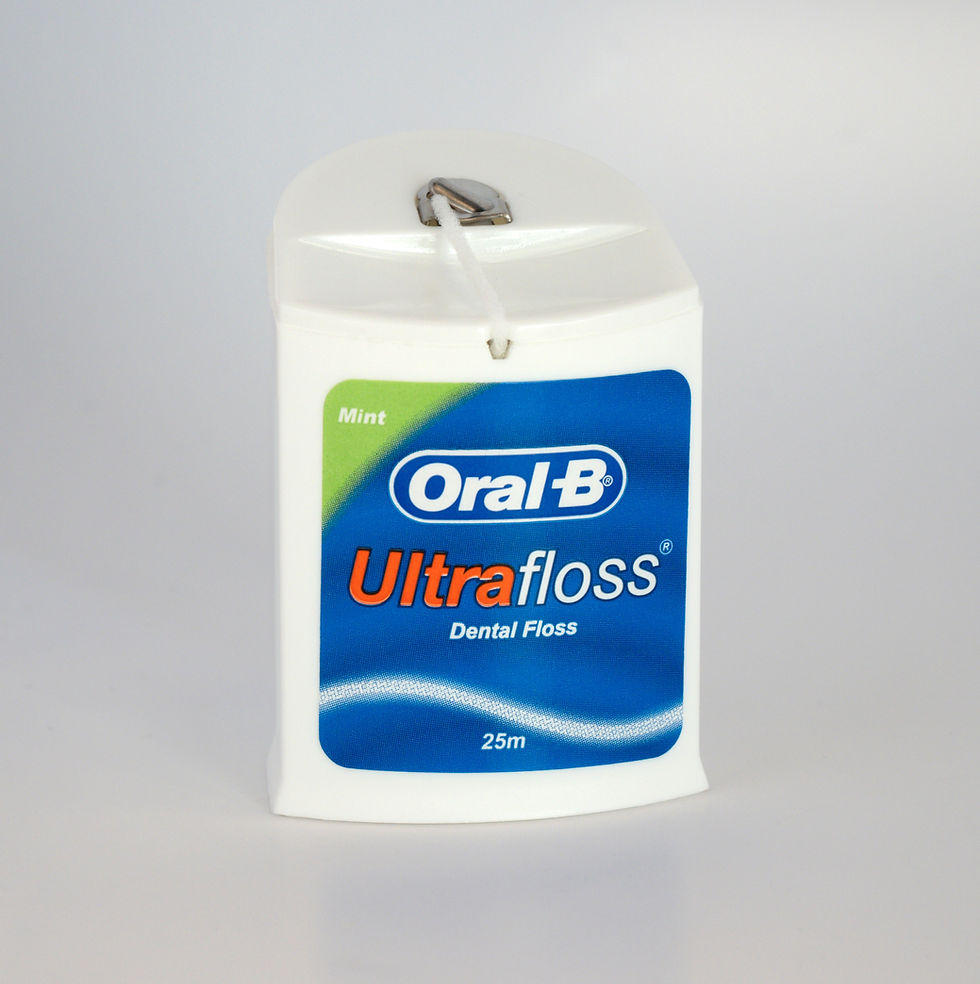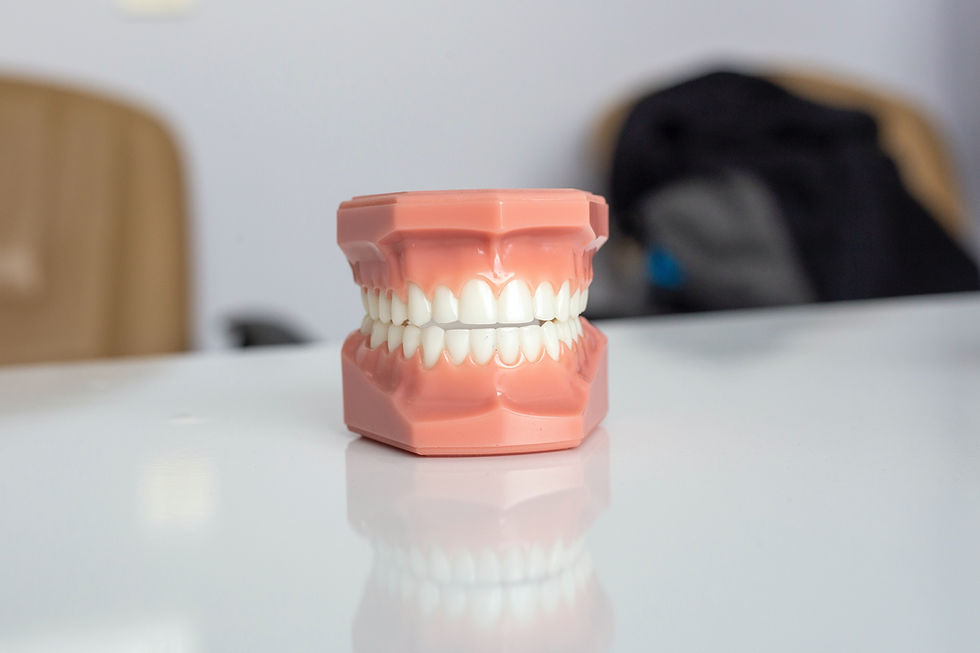How to Prevent Gum Disease
- Dr Hina Rathore Saraf
- Feb 18, 2023
- 2 min read
Updated: Feb 20, 2023
Statistics present the gum reality that 95% of the population in India suffers from periodontitis. Only 50% of the population uses toothbrushes.
Gum disease is a serious issue affecting your gum tissue and bone supporting your teeth. If left untreated this disease can lead to tooth mobility and eventually loss of tooth and bone.
It's important to know what you are up against so you can be prepared to catch any problems before they turn into larger health-threatening issues.
Maintaining good oral hygiene is very important to prevent gum diseases.
Signs and symptoms of gum disease:
Swollen or puffy gums
Bright red, dusky red, or purplish gums
Gums that feel tender when touched
Gums that bleed easily
Pink-tinged toothbrush after brushing
Spitting out blood when brushing or flossing your teeth
Bad breath::occurs because of the presence of bacteria
Pus between your teeth and gums
Loose teeth or loss of teeth
Painful chewing
New spaces developing between your teeth
Gums that pull away from your teeth (recede), making your teeth look longer than normal, creating pockets between teeth and gums, which affects bone and tissue
A change in the way your teeth fit together when you bite
Here are tips to maintain good oral hygiene:
Proper Brushing Techniques

You should brush your teeth twice a day or after every meal. Brushing is essential for removing the food particles and plaque that remain adhered to your teeth surfaces.
Use a soft bristle toothbrush, hold your toothbrush at a 45-degree angle, and brush on each side of your mouth for 30 seconds. Brushing should always be in a circular motion.
Do not apply horizontal pressure while brushing.
Fluoride Toothpaste

Fluoride toothpaste is more effective at combating gum disease, reducing gingivitis, freshening your breath, and preventing tooth decay. It also strengthens your enamel.
For children up to 2 years of age, fluoride-free toothpaste is recommended.
Floss and Interdental brush

Flossing removes bits of food and plaque stuck in between two teeth surfaces. Regular flossing once a day is advisable to keep your teeth and gums healthy.
When there is a larger gap between two teeth surfaces, It is advisable to use an Interdental brush to prevent food lodgement in that particular area.
Antibacterial Mouthwash

Mouthwash is best used in conjunction with your other oral hygiene habits.
It removes any food particles and plaque lingering in your mouth, thus preventing plaque and tartar build-up.
Quit Smoking
Smoking is bad for your overall health, including the health of your mouth. As smoking weakens your immune system, it becomes that much harder for your body to combat gum infections. As well, it’s much harder for your gums to heal if damaged.
Eat Well

Your diet affects the health of your gums. High-sugar foods, junk, and stick foods are harmful to your oral health and can promote tooth decay.
Fibrous foods, vegetables and foods rich in vitamins D, C, and K are particularly good for your mouth.
Professional Cleanings

When it comes to gum disease, prevention is the best treatment. It’s important to visit your dentist once every 6 months for routine cleaning and check-up.
As tartar can only be removed by a dentist, these cleanings are invaluable. Your dentist assesses the health of your gums and teeth and catches any developing issues early, thus preventing irreversible damage to your mouth.


Comments